Disclosure: This post may contain affiliate links, which means I may earn a commission if you decide to make a purchase through my links, at no cost to you.
Your safety is a top priority when traveling. Regardless of whether you are traveling by yourself or with others, there are a few safety and security tips you should keep in mind to protect yourself. For your convenience, my travel safety tips are grouped by category.
15 Useful Security and Safety Tips
1. Travel Planning Safety Tips
Travel safety tips to use before you book your next vacation
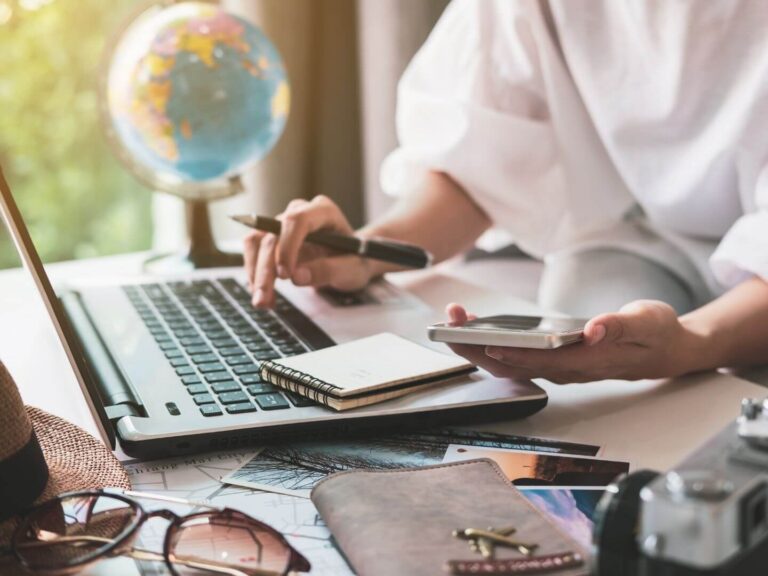
Before booking your next vacation, do your research. For instance, if you plan to leave your home country, check the U.S. State Department’s travel advisory webpage to find out the potential safety concerns in your intended destination. In particular, check the advisory level (1-4), type of crime in the city or state you are visiting, and travel scams.
Table of Contents
ToggleTravel safety tips to use after you book your next vacation
Once you book your vacation, I highly recommend that United States citizens register for the State Department’s STEP program (Smart Traveler Enrollment Program) to get up-to-date security alerts about the places you plan to visit. The STEP program asks you to enter your travel dates to receive targeted information slightly before and while you are traveling. Through STEP, you can also obtain information about U.S. embassies and consulates to assist you in an emergency.
The STEP program is extremely useful. During a visit to Hong Kong, I received regular updates about the ongoing protests and transit closures. I used this information to plan how I was going to get to my hotel.
2. Clothing Safety Tips
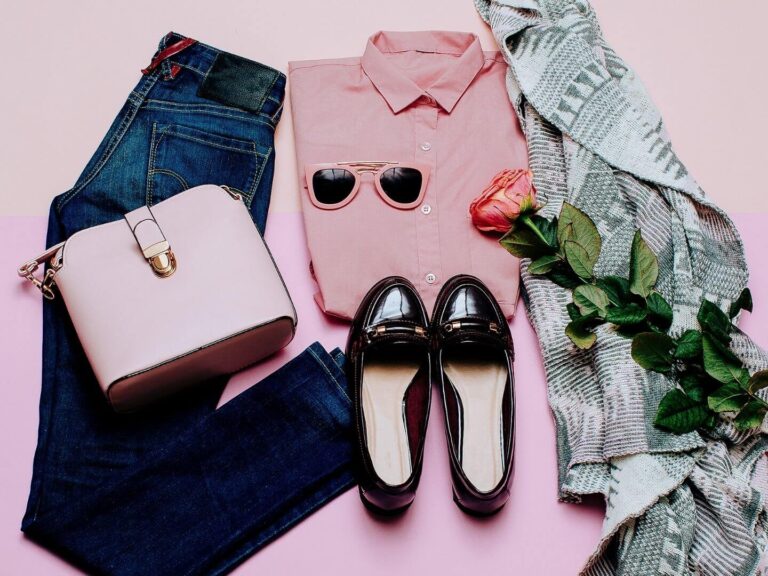
Aim to blend in when traveling. We owe it to ourselves to be thoughtful about our attire. Blending in is particularly important when visiting countries where the dress is modest. In those countries, try to select an outfit that will allow you to be part of the crowd instead of standing out. By wearing clothes that fall in line with the country’s style of dress, you are also being respectful of the local culture and/or religion. Being respectful will also help you blend in. This is just one of the easy ways to avoid making yourself an easy target of a potential crime and prevent you from making avoidable travel mistakes.
On a recent trip to India, I chose to wear pants when visiting tourist attractions instead of a sundress, even though it was very hot. However, I noticed another tourist at a popular destination wearing leather pants and a midriff bearing shirt. I thought to myself, yikes, why would you wear that outfit here and, in this heat, you must be dying? I was not the only one who didn’t understand her outfit choice. Everyone was staring at her, and not with admiration. If we were in New York City, more power to her, but this was not New York City.
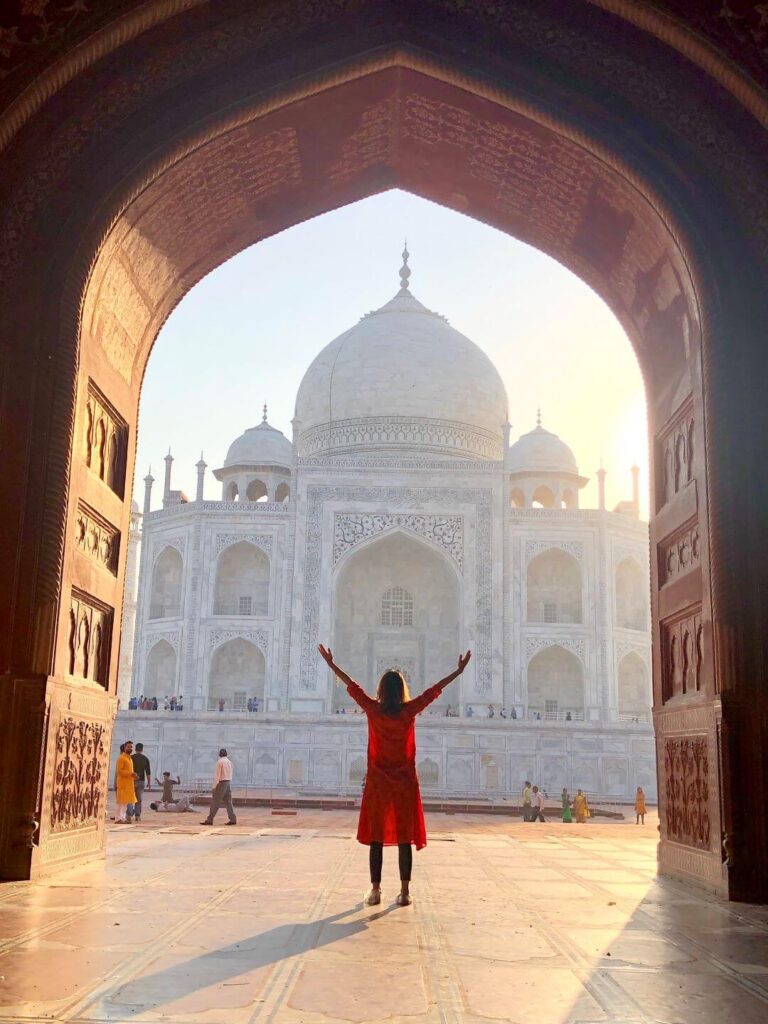
Try to do a little research to see what type of dress is permitted before you start packing for your next trip. Sometimes, countries have dress code requirements that you might not anticipate. For example, since the Maldives is an Islamic country, visitors should cover their shoulders and avoid short or tight-fitting shorts. However, these restrictions generally do not apply on the resort islands.
Try to remember that each country has its own customs and traditions that play a large part in how you should dress. By following the local customs, you can avoid attracting unwanted attention.
3. Transportation Safety Tips
When traveling, it can be a bit nerve-racking getting into a random person’s car or taxi and asking them to drive you in an unfamiliar city.
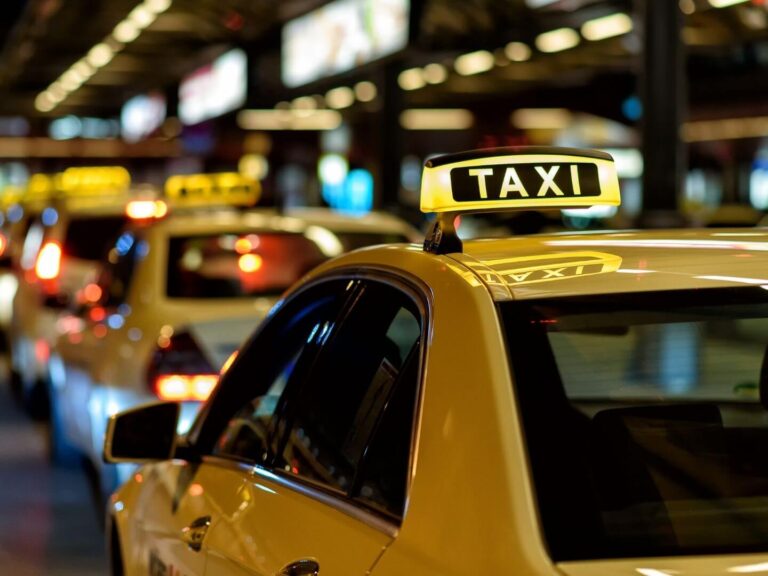
Here are a few safety tips to help keep you safe while getting from point A to B.
- Before traveling to a foreign country, do a little bit of research to determine whether it is safe to hail a taxi or if you need to pre-arrange your transportation. For example, several years ago, when we were in Belize City, the hotel we stayed at explicitly told us not to hail a taxi. Instead, we were told in no uncertain terms that we should ask the restaurant to call a cab for us. When you get this type of advice, you should heed the warning and follow the instructions.
- Once you get into a taxi, use Google Maps to track your route to make sure your driver is taking you in the right direction.
- Be aware of taxis with fast meters. Before you leave your hotel, ask the concierge how much the taxi fare should cost. If you notice the meter running too quickly, say something. During our visit to Hanoi, Vietnam, we noticed that the meter was incredibly fast and said something to the driver. He threw a fit and threatened to turn us into the police. We told him to either drive to the police station so we could report him for trying to rip us off or pull over and let us out. Needless to say, he pulled over, and we hailed another taxi.
- When riding the subway or train, try to avoid sitting in a car by yourself. Instead of sitting alone, move to a subway car that has at least a few other passengers. It’s better not to be alone and an easy target.
- Before getting into a car (taxi or otherwise), take a picture of the license plate.
4. Navigation Safety Tips
Keep your head up
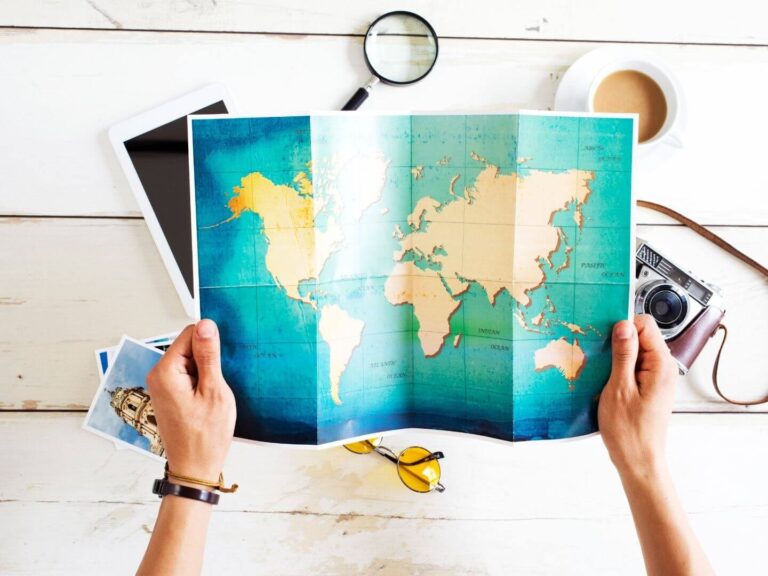
When you are in an unfamiliar city, it can take a little while to get your bearings. You may need to refer to a map or an app on your phone for directions. You can easily make yourself a target if you pull out a map in a tourist destination or act like an ostrich with your head down, staring at your phone. But you can just easily avoid being a target by walking into a store to check a map instead of looking out in the open.
Use a hotel business card
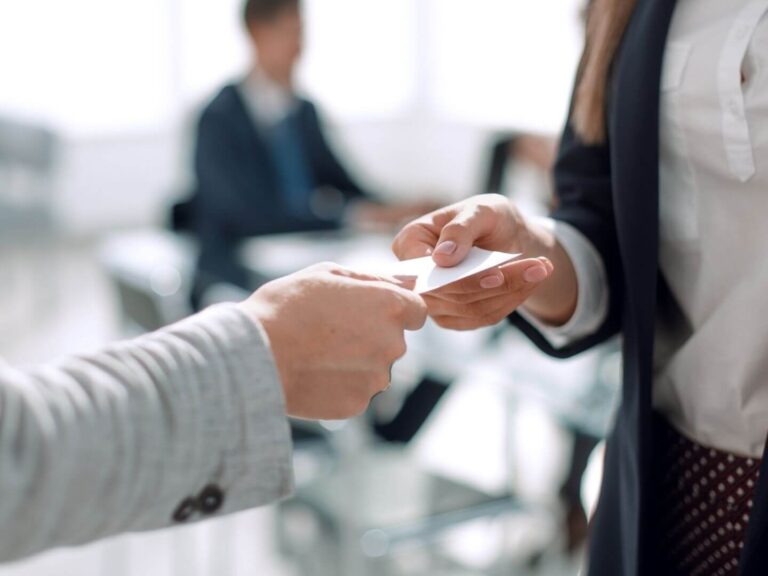
If I am traveling in a city where I do not speak the language, I usually ask the front desk for the hotel’s business card. Hotel business cards have the hotel’s name, address, and telephone number. Give the business card to your taxi driver, so he/she knows where to take you. My plan is not foolproof since your driver needs to be familiar with your hotel for this plan to work but so far, so good.
5. Hotel Safety Tips
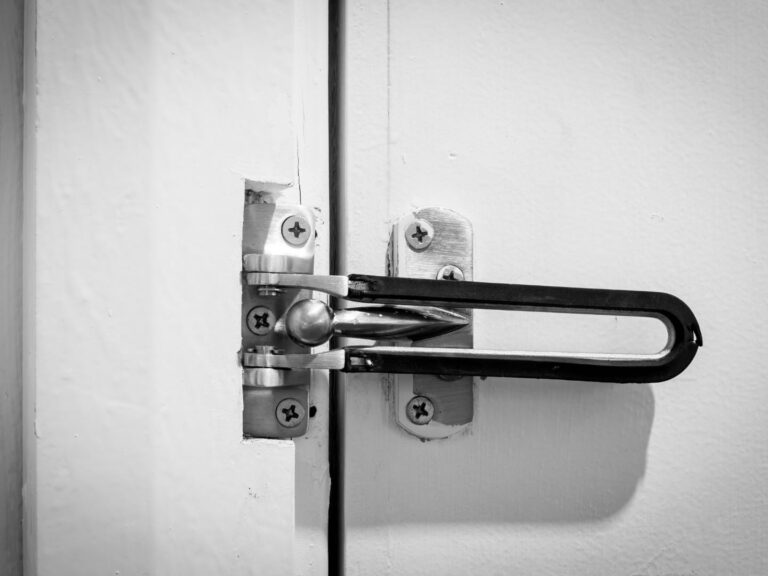
This might be an obvious one, but it’s one I use all the time. Make sure you lock your door and use the safety latch. If you are on the ground floor, it’s also important you close and lock your windows before you go to sleep. Criminals can crawl through your window and steal your belongings while you sleep, even at the fanciest hotels. Unfortunately, this happened to a friend of mine. I don’t say this to scare you. Instead, I want to remind you to think smart when traveling.
Also, consider using the hotel safe. It’s there for you to use, so why not use it? For extra security, you can bring along your own lock such as the ones below.
6. Travel Document Safety Tips
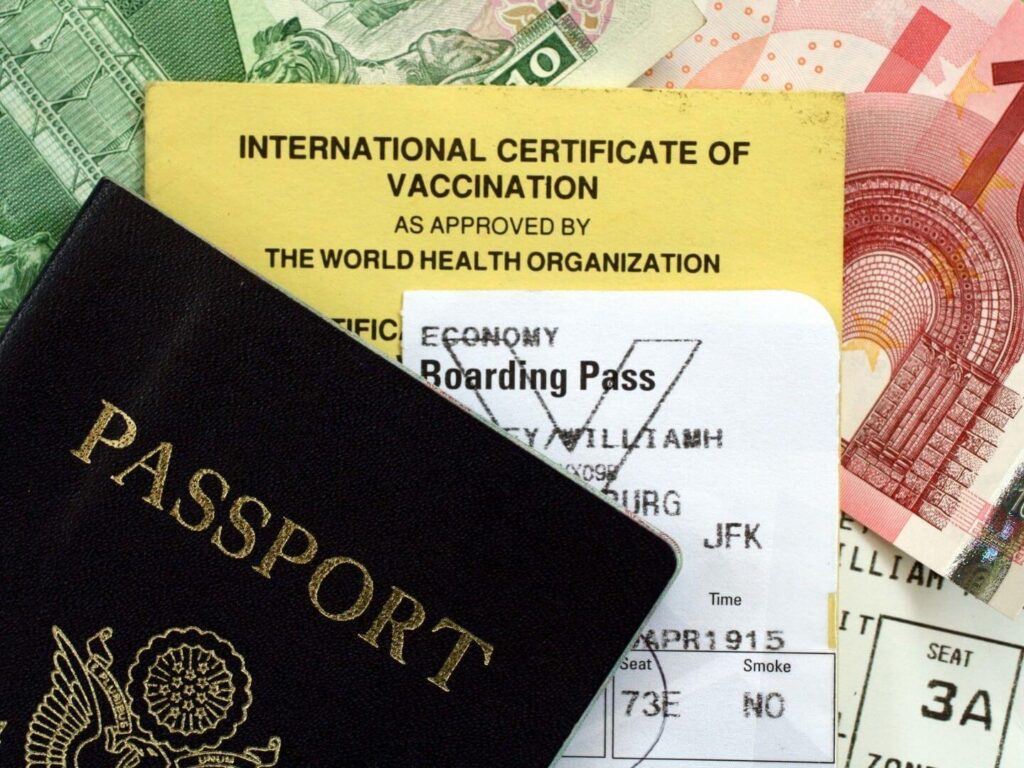
As you know, traveling internationally generally requires a passport and sometimes a visa. So, it’s important that you keep your travel documents (passport, visa, etc.) safe. I generally keep a copy of my travel documents in my luggage. You can also upload a copy of your travel documents to the cloud if you need to access them while traveling. Finally, you could give a copy of your documents to a trusted friend who could send them to you in case of an emergency.
I also like to keep a hard copy of my travel itinerary and confirmation numbers in the off chance my hotel does not have a record of my reservation. You can save yourself a lot of hassle if you have the confirmation to share with the front desk agent.
7. Safety Tips For Keeping Your Valuables Secure
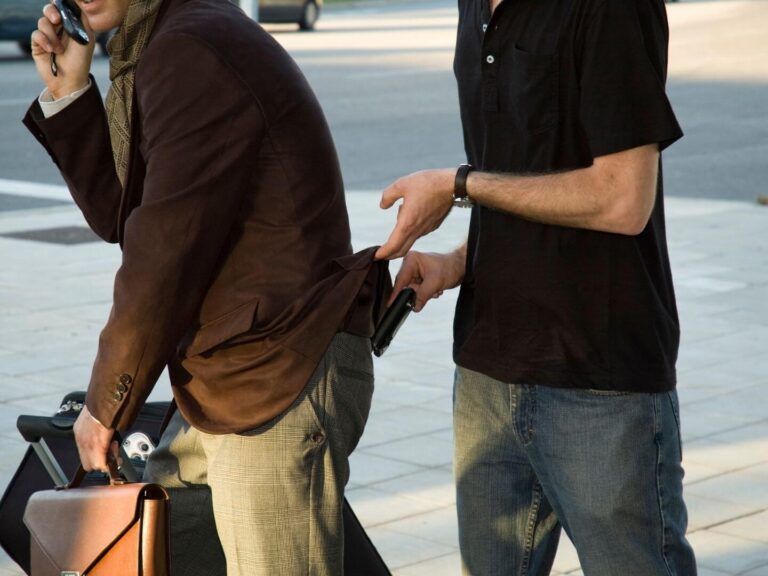
Don’t put all of your valuables in one place
When in transit from one destination to the next, you have no choice but to carry your valuables with you. You can, however, be smart about it. For instance, don’t put your money, credit cards, and identification all in one place. Spread out where you keep your money. Otherwise, if your wallet gets stolen, you’ll be up the creek without a paddle. So, you might put your cash in one pocket, your passport in another, and your credit cards somewhere else on your body.
Keep your valuables on you
I also suggest wearing clothing on your travel days with secure pockets. You can keep your valuables on you by wearing secure clothing instead of in a purse or backpack. For example, you can wear a jacket with an inside pocket or a pair of pants with a hidden zipper compartment. These little steps make it harder for someone to try and pickpocket you.
We learned this lesson by accident. When I was much younger, I was lucky enough to go on a family trip to Italy. While our family was walking around Rome, several children swarmed my dad asking for money. Their tacit was to distract him while placing their hands on his pockets and loudly wailing while trying to steal his wallet. Fortunately for us, his money was inside his zipped jacket pocket. But it was a good lesson to learn at an early age.
There are several products on the market to help keep your valuables safe. Here are a few you might like.
Don’t leave your bag hanging on a chair
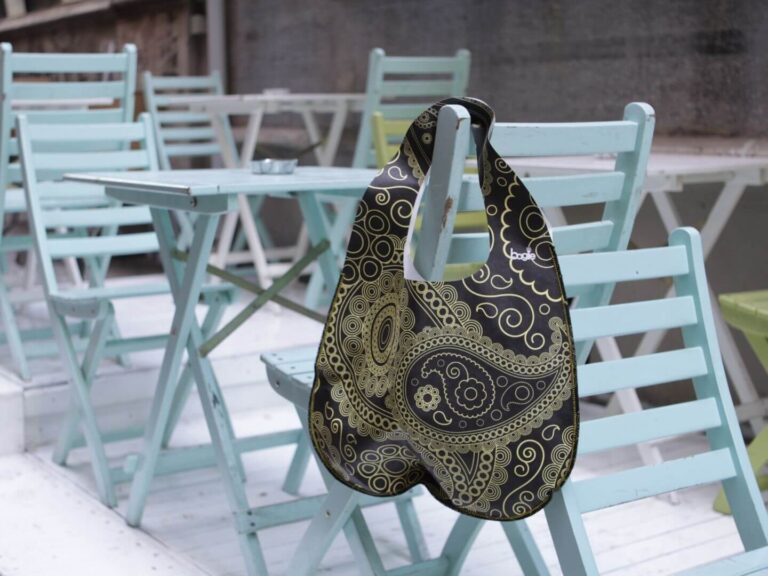
If you carry your valuables in a purse or backpack, don’t leave them hanging on the back of your chair. It’s easy for someone to come by and swipe your bag without you noticing until it’s too late. Sadly, this happened to a couple of my family members on the last day of a trip to Europe. Their passports were stolen, and to make a long story short, they almost missed their flight home trying to secure new passports.
8. Jewelry Safety Tips

Before you leave for your trip, give serious consideration to the jewelry, if any, you want to bring with you. Depending on the country you are visiting and the activities you plan to take part in, you may want to leave your valuables at home. Women, in particular, can be easy marks for a robbery when wearing expensive shiny jewelry. Instead, consider leaving your jewelry at home.
- Pro Tip
If you like to wear a ring, think about buying an inexpensive ring that doesn’t attract a criminal. For this reason, I suggest skipping cubic zirconia and look for something fun and nondescript.
On a trip to Brazil, I decided not to bring my wedding or engagement rings. However, I felt strange not wearing a ring since I have been wearing a wedding ring for so long (more than fifteen years!) On that trip, coincidentally, my husband and I wandered into the jewelry district in Rio. We had a terrific time picking out a simple, inexpensive ring together. I wear the ring all the time, and no one thinks twice about it. Plus, every time I look at it, it reminds me of our fun afternoon.
9. Arrival Safety Tip
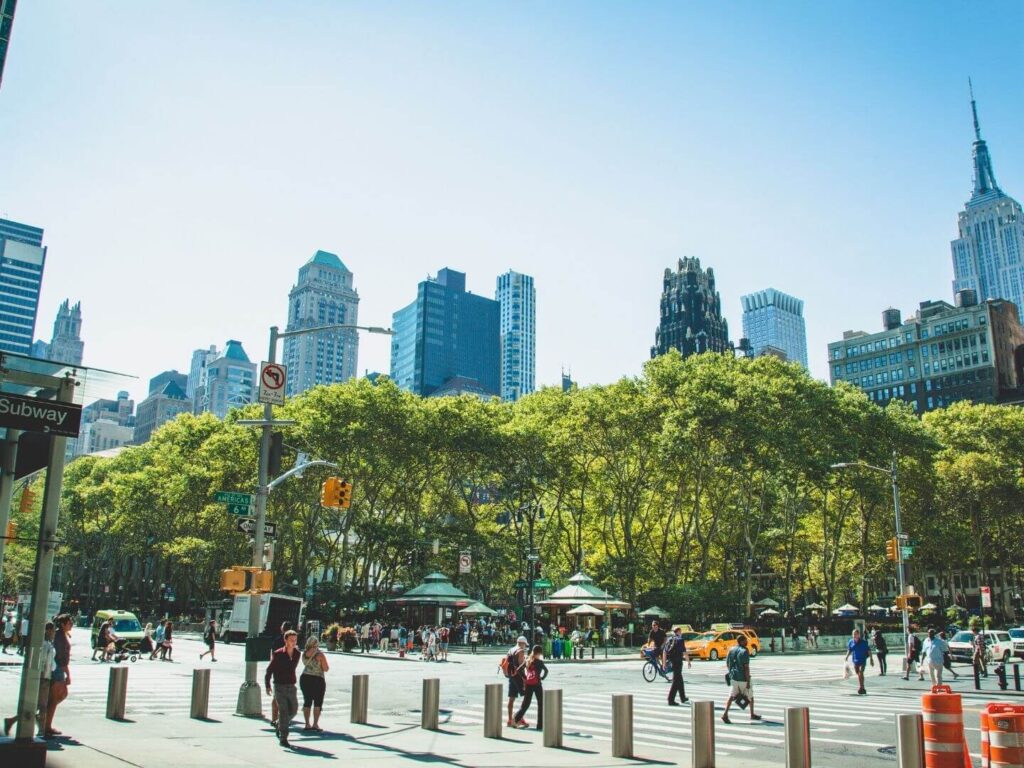
If possible, try to arrive at your destination during the day when the sun is still out. By arriving during daylight hours, you can use the time to get familiar with your new destination. Try going for a walk to stretch your legs and learn about your new city.
10. Luggage Safety Tips
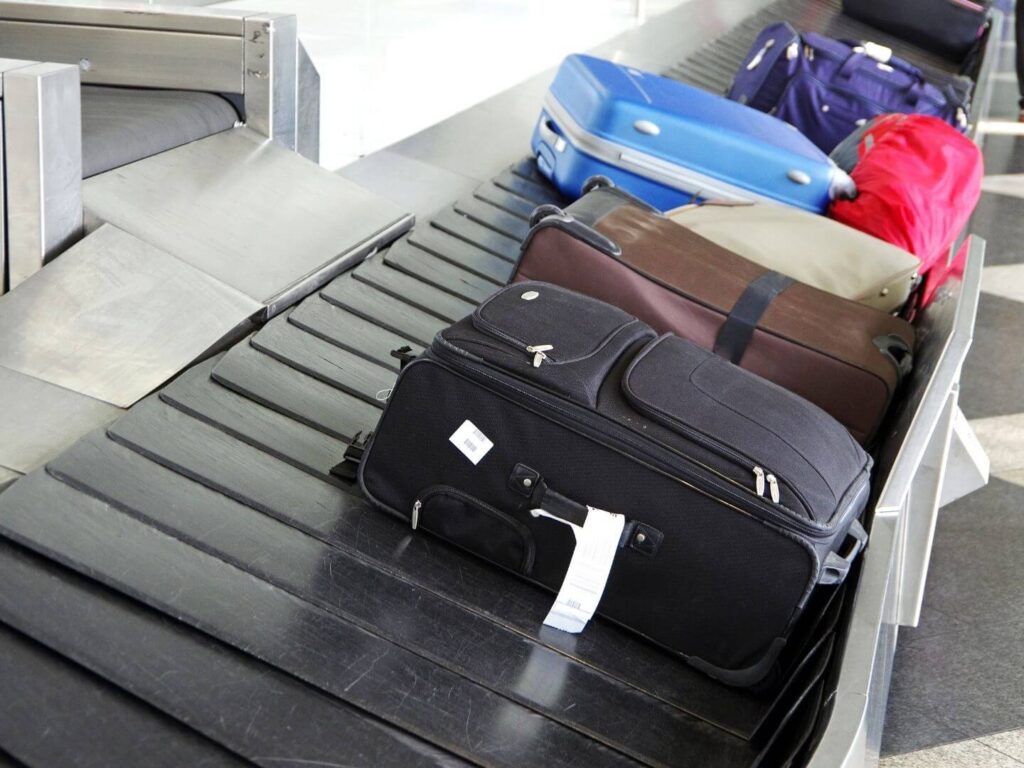
Luggage tags are your friend
To keep your luggage from getting lost I recommend you use a luggage tag. However, be careful about the information you put on your luggage tag. For instance, I never put my home address on my luggage tag. I do, however, include my telephone number and email address. Alternatively, you can slip your business card into your luggage tag (assuming it doesn’t have your home address).
If your suitcase doesn’t have a luggage tag, you can use one of these cute tags to dress up your bag and make it easy to spot when it comes off the conveyor belt.
Another tip I learned recently is to include a luggage tag inside your suitcase. Using a backup luggage tag, you can rest assured that if someone needs to contact you about your lost luggage from the airport, they will know where to find you.
Luggage locks
Another way to keep your luggage secure is to use a lock. However, these days, if you are flying, you cannot use any lock. The lock must be TSA-approved. Otherwise, you run the risk of a TSA agent cutting open your suitcase if it needs to be inspected.
11. Money Safety Tips

Take more than one credit card
When I travel to another country, I always take more than one credit card. You never know when your first credit card can be compromised or stolen. I also keep my credit cards in different places. That way, if my primary credit card is stolen, I still have a backup credit card.
Use Apple Pay
If you have an iPhone, you can also use Apple Pay. Apple Pay is a secure way of paying with a much lower risk of someone stealing your credit card information.
Travel with small bills
I also like to travel with small bills, which are handy for tipping. I keep a few small bills with me. It’s better than whipping out a large wad of $100 bills which will surely draw attention.
When I am out for the day, I only take what I need. For example, I might take a credit card and a few small bills and leave my backup credit card at the hotel in the safe.
ATM Safety Tips
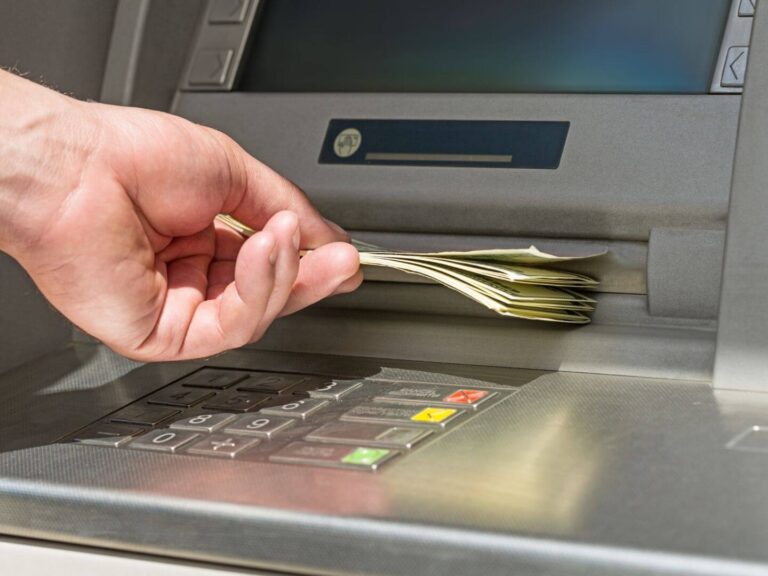
ATMs are a prime place for you to become the victim of a crime. So here are a few safety tips for visiting an ATM:
- Visit ATMs that are in well-lit places
- Be aware of your surroundings, and don’t doddle
- Don’t count your money at the ATM
- Keep a low limit on your ATM card in case it gets compromised.
- Contact your bank if your ATM card is compromised.
You might also want to open a separate bank account that you use only for traveling with a minimum balance. That way, if your card is stolen, your exposure to theft is as low as possible.
12. Cell Phone Safety Tips
Technology has advanced so much in recent years that international phone plans have become much more affordable. It is handy to be able to make a call at a moment’s notice or look up directions, book a hotel, or check out a potential tourist attraction. In addition, it is generally much less expensive to get a plan rather than paying as you go. You may want to contact your wireless carrier before you leave for your vacation and determine how much an international phone and data plan might cost.
If possible, avoid public WiFi at airports. You have probably heard stories about people having their phones hacked because they logged onto a public WiFi. If you need to use WiFi at the airport, you can purchase a VPN to improve your WiFi security.
13. Language Safety Tips

When visiting a country where you do not speak the language, it is good to learn a few helpful words. Before your trip, think about learning the following words:
- Thank you
- Please
- Help
- Emergency
- Where is the hospital, embassy, police station, doctor, pharmacy, and my favorite, bathroom.
(Although the bathroom is not exactly a safety word, it is important to know!)
14. Safety Tips for Staying in Contact With Friends and Family
Traveling is one of my favorite things to do. I love disconnecting and enjoying the moment. However, it is vital to check in with loved ones, so someone knows to alert the authorities in case of an emergency. I recommend you have a plan, such as calling x person every Wednesday and Saturday to check in or provide a loved one with your itinerary, so someone knows where you are supposed to be while you are out exploring the world.
- Pro Tip
I recommend keeping a list of emergency contact numbers. That way, if an emergency does occur, you know who to contact.
If you have travel insurance, keep a copy of the policy with you. The policy should contain information about who to contact if your flight is delayed/canceled, your luggage is lost, or there is an emergency. I would also suggest you keep an electronic copy of your policy.
15. Use Your Common Sense
Common sense and a gut check can help save you, even from yourself.
Don’t do stupid things for pictures
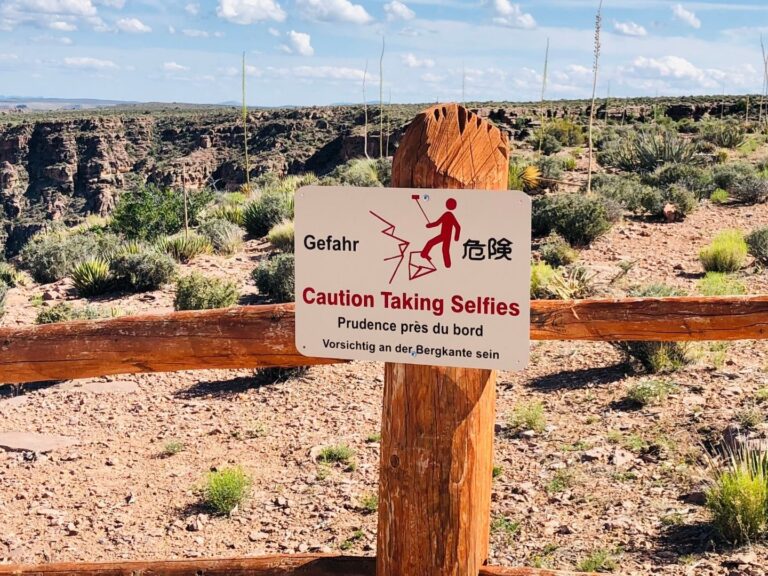
Every year people die trying to get the perfect picture. So, when your gut tells you don’t step any closer to the edge of that cliff, you should listen.
There are now signs warning people at places like the Grand Canyon not to take pictures too close to the cliff’s edge. It’s hard to believe that these signs are even necessary, but since people keep dying, I guess people need to be reminded not to get too close to the edge of a cliff.
Don’t drink too much
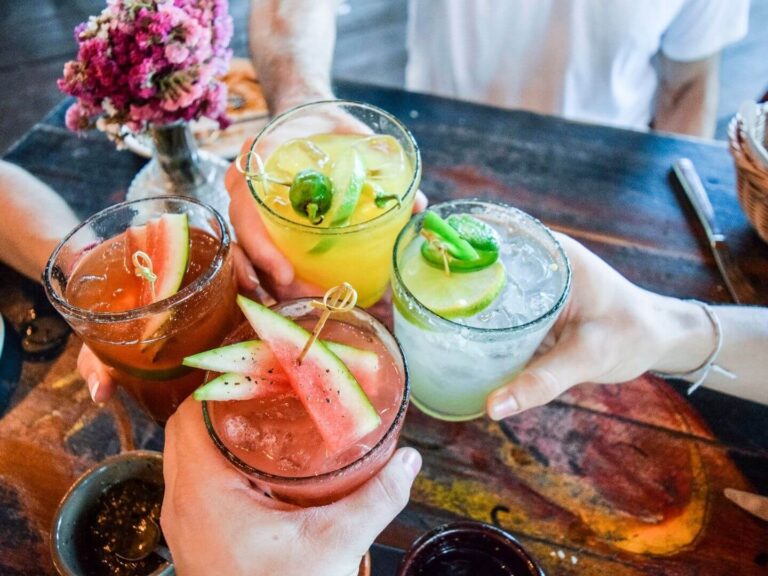
Who doesn’t like going out and having a few drinks with friends? These experiences can be fun and some of the most memorable (assuming you don’t drink so much that you cannot remember the night before). Remember to be smart while drinking and keep your wits about yourself. The last thing anybody wants is someone trying to take advantage of you.
Be aware of your surroundings
It’s important to be aware of your surroundings. For instance, it might not be safe to walk home when the streets are dark, and no one is around. In this type of situation, you should think about calling for a taxi instead of walking home. Or, if you go to an ATM, look around to make sure no one is following you before you approach the ATM.
Situational awareness is also a crucial skill. Sometimes, it’s just innate. You know you should be on guard when the hair on the back of your neck stands up, or you get a creepy feeling someone is following you. These are signs you should take seriously for your own safety and security.
Why Sould You Still Travel?
The purpose of this article is not to scare you away from travel. Instead, my goal is to give you a few safety tips to help you travel smarter. By implementing some of my suggestions, I hope you can avoid some of the common pitfalls and mistakes travelers make, including me. I’d love to hear from you and find out some of your travel safety tips. Drop a comment below and share your safety tips with your fellow travelers.
You can find more travel tips and tricks on my website, including articles on
- How to plan the perfect road trip
- Travel essentials for every traveler
- Avoiding travel mistakes when booking a trip
- Tips for planning your next vacation.
Be safe and have fun!
I’d love for you to subscribe to The Trav Nav!
To subscribe, just fill out your first name and email address below.
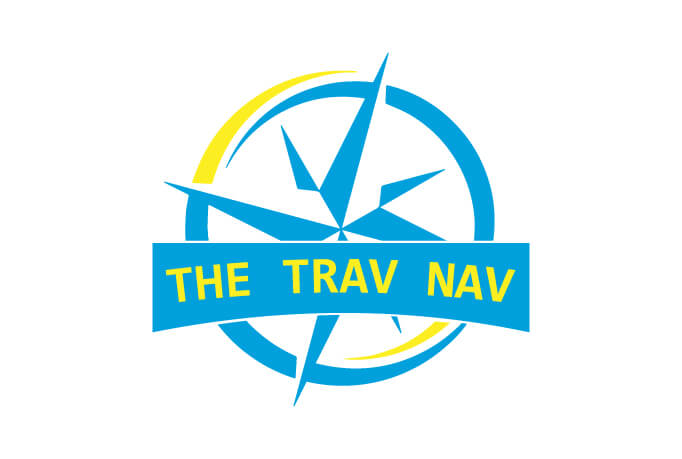
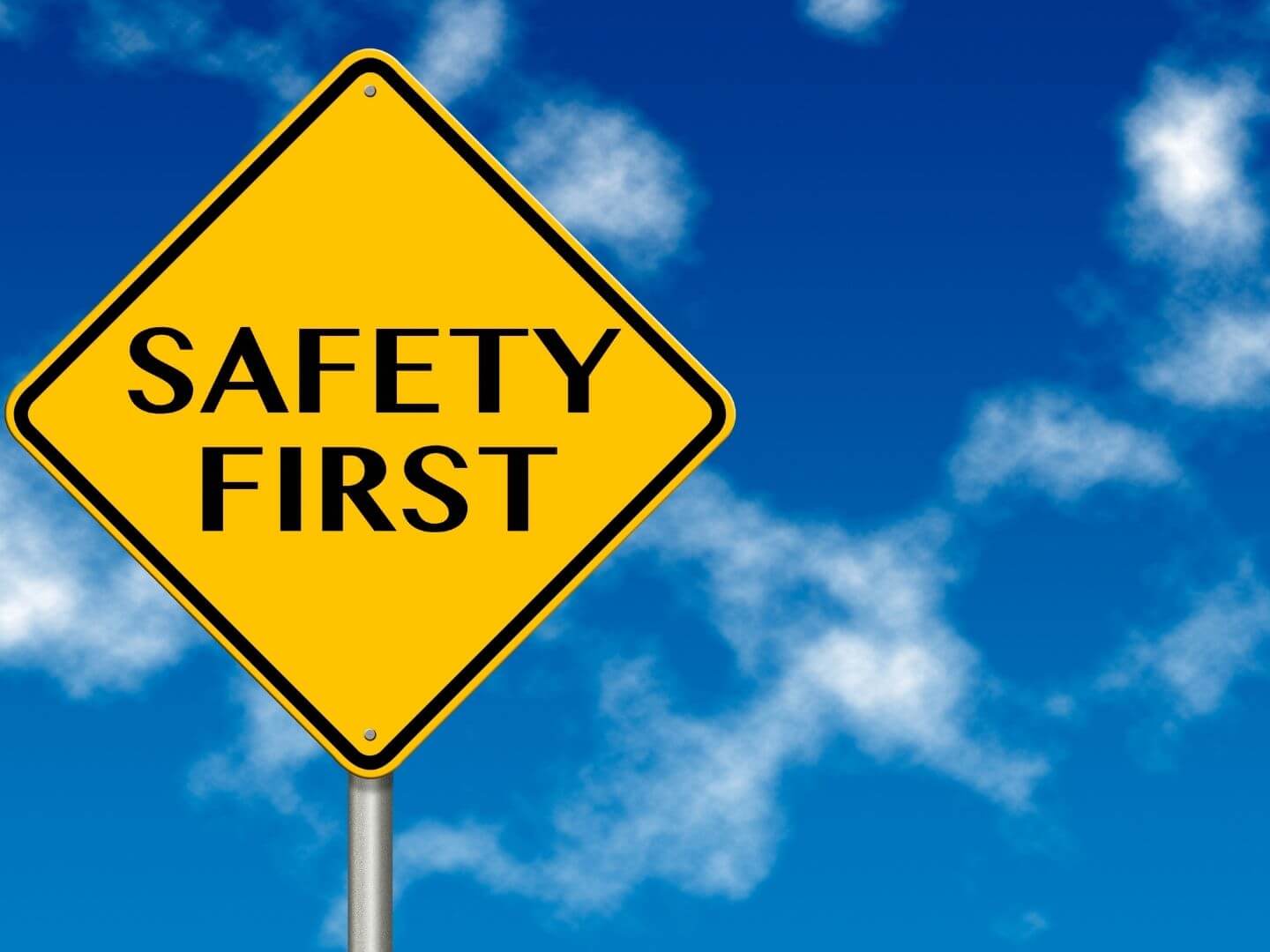








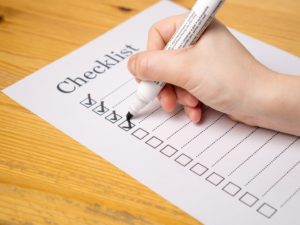

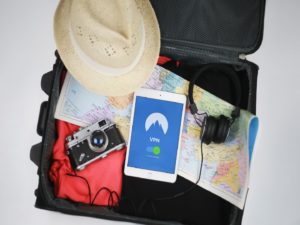
These are brilliant tips Michelle!
Blending in and not standing out is definitely one of the best ways to avoid issues!
loving all the tips, thanks!
Thank you so much! I am happy to hear you found these tips helpful!
These travel safety tips are great! I love the one about wearing clothes that blend in so you don’t stand out as a tourist. I would never have thought about travelling with two credit cards either, great advice! Thanks for sharing these tips!
Thanks for these tips. Always such a good reminder!
Common sense is the biggest safety tip. These are great suggestions. I do most of these on my solo trips. Thanks for the informative guide.
Great tips! Dressing to blend in is really important. I always do my research about what to wear in a new country before I visit. Thanks for sharing!
Thank you!
Fantastic ideas. In regards to pick pockets, I think we would all like to believe no one would take OUR stuff or that surely we would notice. It happens and it is so much better to take precautions.
I totally agree!
Very informative. As an experienced traveller myself I agree with everything you mentioned and you even made me think of a few things that I need to put into practice. 🙂
Thank you! Stay safe while traveling.
These are great travel safety tips! I agree it’s important to research what type of clothes you must wear in certain countries.
So many great tips! I already do most of these, but it is always nice to see someone agree. 🙂
I am glad you included the part about looking up (rather than being glued to your phone/a map) and of course, using common sense. We all need a reminder of that, even when we’re not abroad!
These are such wonderful tips! I especially like your advice to dress to blend in. Dressing way outside of the norm of a country is definitely a way to label yourself as a tourist, and to get yourself into unsafe situations!
Great tip on the STEP enrollment. I’ve heard of it, but never realized it was for any place international. I’ll definitely have to do that next time. And I’m unfortunately guilty of staring at a map on my phone!! I’ll have to step into a store next time.
I think common sense is the biggest safety tip you can give people when travelling. Also love the tip about trying to blend in with your clothes!
I so enjoy reading all of your posts. Always so informative.
Thank you! It means so much to me that you find my blog posts informative.